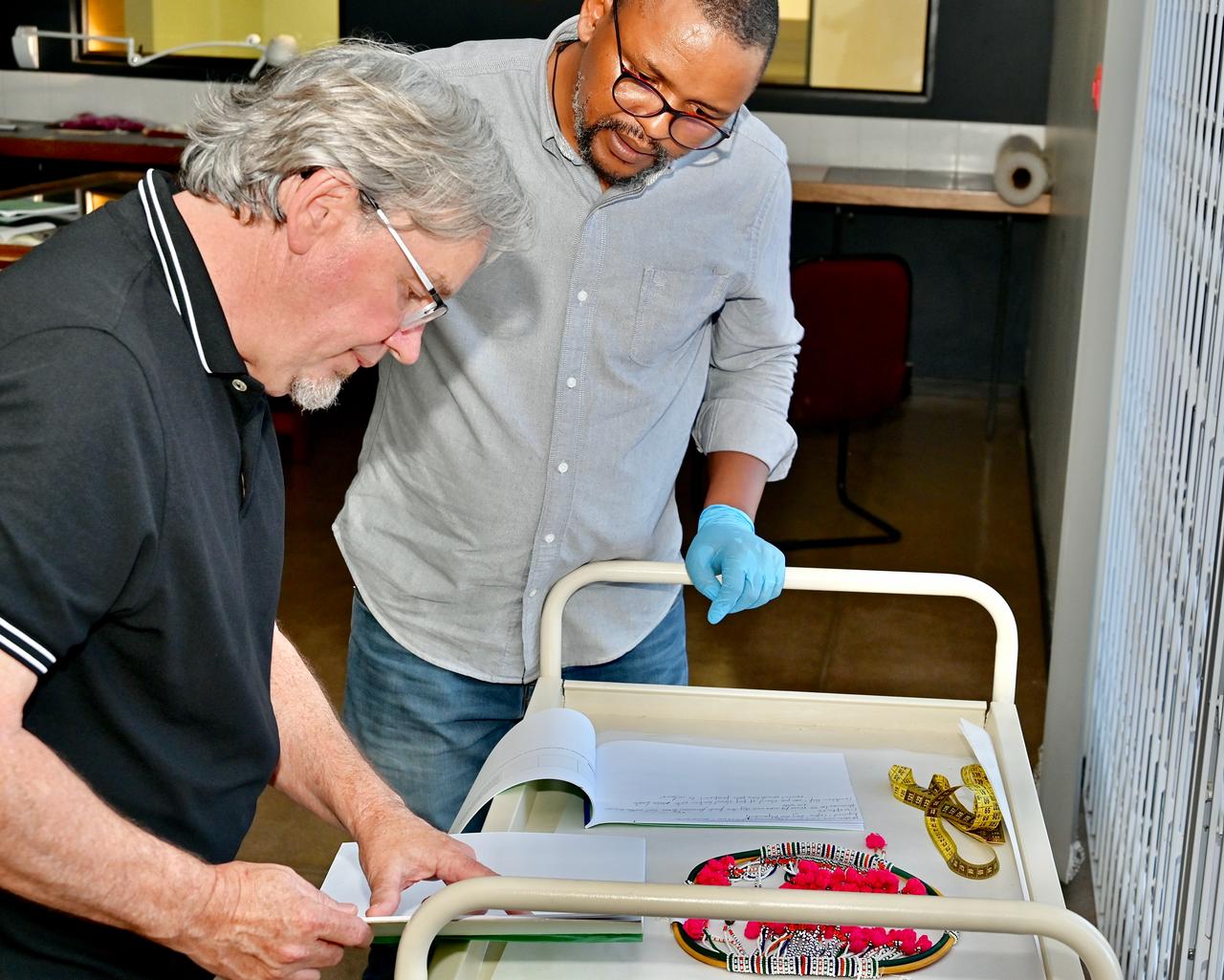COMMUNITY AND SCHOLARSHIP UNITE AT WSU’S BROASTER COLLECTION

Woven with memory and meaning, the Joan Broaster beadwork collection, housed at WSU, is being stitched back into global consciousness, through the hands of those who created it.
In Qebe Village, a bold and community-driven heritage project is transforming a once-forgotten beadwork archive into a living platform of economic empowerment, cultural pride, and academic exchange.
This renewed vision was recently amplified by the visit of Dr. Gary van Wyk, a renowned African art historian and co-founder of the Axis Gallery in New York City.
Van Wyk, whose gallery is committed to promoting both traditional and contemporary African art, travelled to WSU to engage with the collection and connect with its community roots.
The Deputy Director of Library and Information Services, Dr. Samuel Ncoyini said: “This initiative is about bringing the past into dialogue with the present. We are not simply cataloguing beadwork; we are building a platform where the original creators and their descendants can actively shape the future of their cultural legacy.”
During his visit, van Wyk joined WSU curator Zukisa Madyibi and Qebe beadworkers to conduct comparative research between the Joan Broster Collection and other holdings in New York, Bloemfontein, and local museums.
Van Wyk said: “I've decided that it's time to reach out to other people working in this field and try to make a book or bring together scholarship around beadwork; especially beadwork of Xhosa-speaking peoples."
He added, "That's what brought me here, because I know that South African Heritage Resource Agency declared this a national heritage Resource collection, and so I wanted to meet Madyibi and start to see what's here, see what I can offer from what I know from our collection, bring the information together, and collaborate."
The collaboration focused on motifs, colour patterns, and the symbolic meaning behind beadwork created by the AbaThembu and amaBomvana groups; insights that could only be made possible through direct community engagement.
Van Wyk’s connection to the collection extends beyond the Eastern Cape, with some smaller pieces from the Joan Broster Collection are currently housed at the Axis Gallery, with more extensive holdings preserved in American museum collections.
These include a striking women’s costume featuring layered isikaka skirts, richly adorned with bright beadwork, safety pins, and a distinctive red necklace ending in a mirror, resembling a snuff box.
These pieces are significant for their rare combination of dark ochre cloth, thick uncured hide, and vibrant bead patterns; elements that Broster identified as characteristic of older, traditional Xhosa attire.
“Our main mission was to represent South African culture in America and in American museums. We only placed the Joan Broster outfits into museum collections—not private collections; so, we know exactly where they are, and they will be preserved forever in those museums,” said Van Wyk.
As part of this effort, the university plans to acquire new beadwork from community members to outsource the restoration of damaged pieces to local artisans, enrich the collection’s metadata with indigenous knowledge, and provide skills development opportunities that can generate sustainable financial benefits.
This model reflects the evolving landscape of African art, where traditional practices are intersecting with modern fashion, digital archiving, and ethical curation.
By Ongezwa Sigodi
